The Pure Fidelity Horizon MK2
Canadian turntable-maker updates its popular Horizon/Harmony models with a brand new speed controller
In the spring of 2021 a few years into my journey as an audio writer, I was on the hunt for my dream turntable. I'd previously owned some very nice ones : a VPI Scout 1.1, a Rega Planar 3, and a Pro-Ject Debut Carbon to name just a few. But at last I decided I was ready for the big leagues, and wanted to step into the true high-end. There were assuredly some great contenders out there at the time. The Technics 1200G was very appealing for both its sonic performance, innovative motor, and its cartridge swapping capabilities. The VPI Prime 21 was just hitting the market with new upgrades and a new gimbled tone arm, and over in Japan, Luxman was in the midst of launching a new turntable line featuring sleek brushed aluminum plinths. But a chance conversation with the editor at my previous writing endeavor led me to discover Pure Fidelity, an at that time quite unknown turntable producer out of British Columbia.
I was enchanted by the design concept's simplicity combined with incredibly refined choices of materials and construction. What truly caught my attention however, was the company's trademark lacquered wood finishes. At the time Pure Fidelity had two primary models (now three with the introduction of their new to- of-the-line “Symphony”). At the entry level, there’s the “E” line, which feature Delrin platters, MDF plinths and wood finishes, and then there’s the “H” line, which feature thicker plinths and platters, as well as machined aluminum bases that cradle the main plinth. Within these two distinct models, Pure Fidelity offers two aesthetic choices: a traditional rectangular body and one with a distinctive rounded edge. Between the two upper tier models dubbed the ‘Harmony’ and the ‘Horizon’, I chose the Horizon in Santos Rosewood for its sleek, almost mid-century-inspired aesthetic.
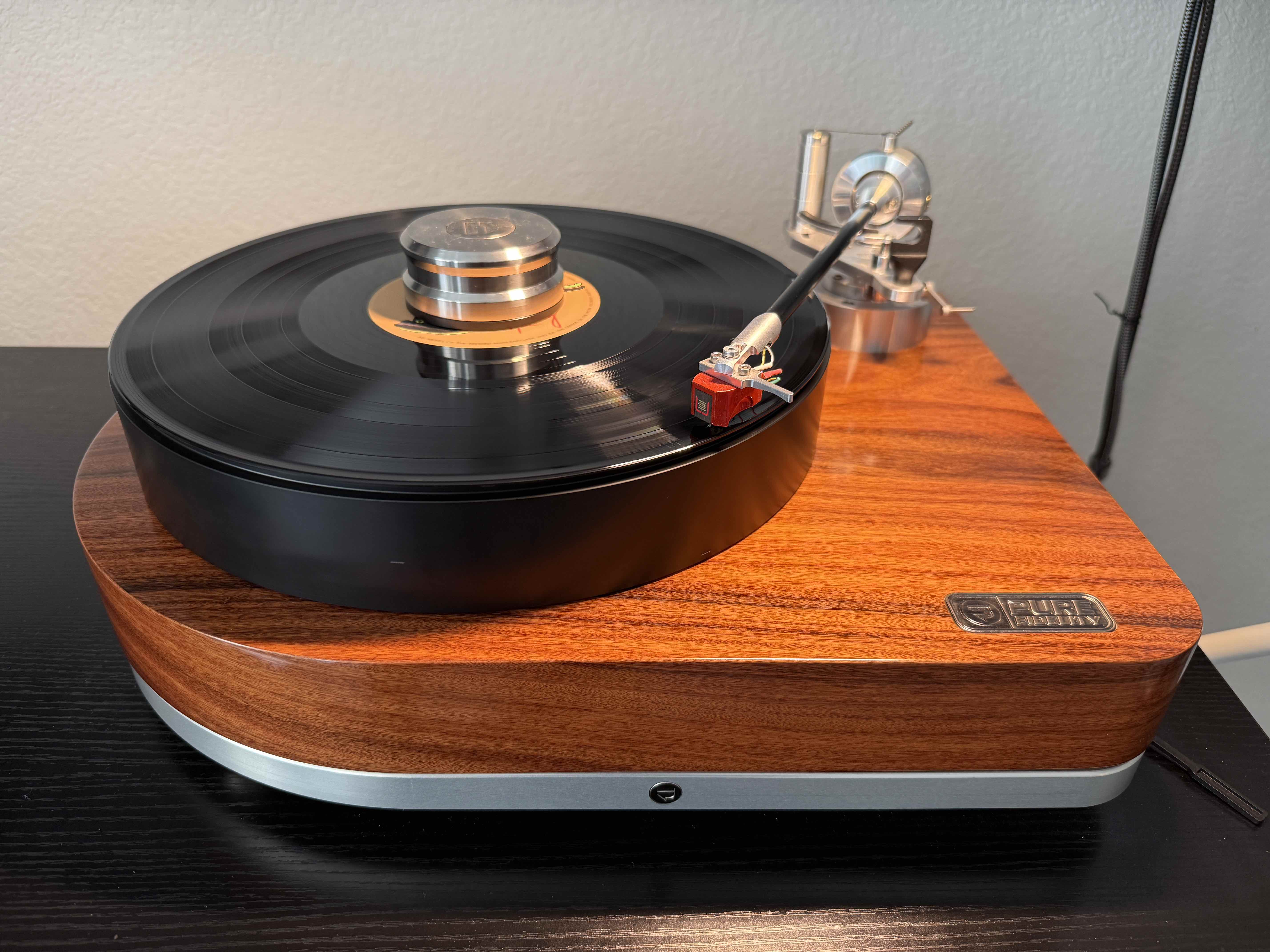 My Pure Fidelity Horizon in Santos Rosewood
My Pure Fidelity Horizon in Santos Rosewood
Prior to my purchase, I spoke with owner and chief designer John Stratton who came across instantly as a man with a passion for simple, robust design, and high-end sound that is “achievable”. Lots of smaller turntable manufacturers either outsource entire sections of their designs or engineer so much proprietary technology that they easily reach five digits without a second thought. Last year I had the opportunity to review for The Absolute Sound the impressive yet intimidating Reed Muse 1C idler drive turntable with the 5T tangential tracking tonearm. That table had remarkable sound, but was complex to a degree that I found frightening and caused lots of setup headaches that raised some concerns about what a table like that would be like to live with and service. Pure Fidelity has a design philosophy that, while high-end in execution, avoids the experimental in favor if what's tried and true.
Pure Fidelity turntables, all made in-house, combine traditional designs with sturdy, robust components. The company's design philosophy is a “hybrid” that sits somewhere in between mass-loading (think VPI) and low-mass (think Rega). All PF turntables use dense MDF plinths and Delrin platters that incorporate “flywheel” weight distribution. Having listened to a number of excellent turntables over the years, I find tone-wise, Delrin delivers some of the best performance and is my preferred platter material. The twin belt drive system features a basic but precisely machined aluminum and stainless steel sub-platter (unique in its class) riding on a ruby ball bearing within a bronze bushing, driven by a double-ganged stainless steel pulley.
 The motor and sub-platter of the Pure Fidelity Horizon
The motor and sub-platter of the Pure Fidelity Horizon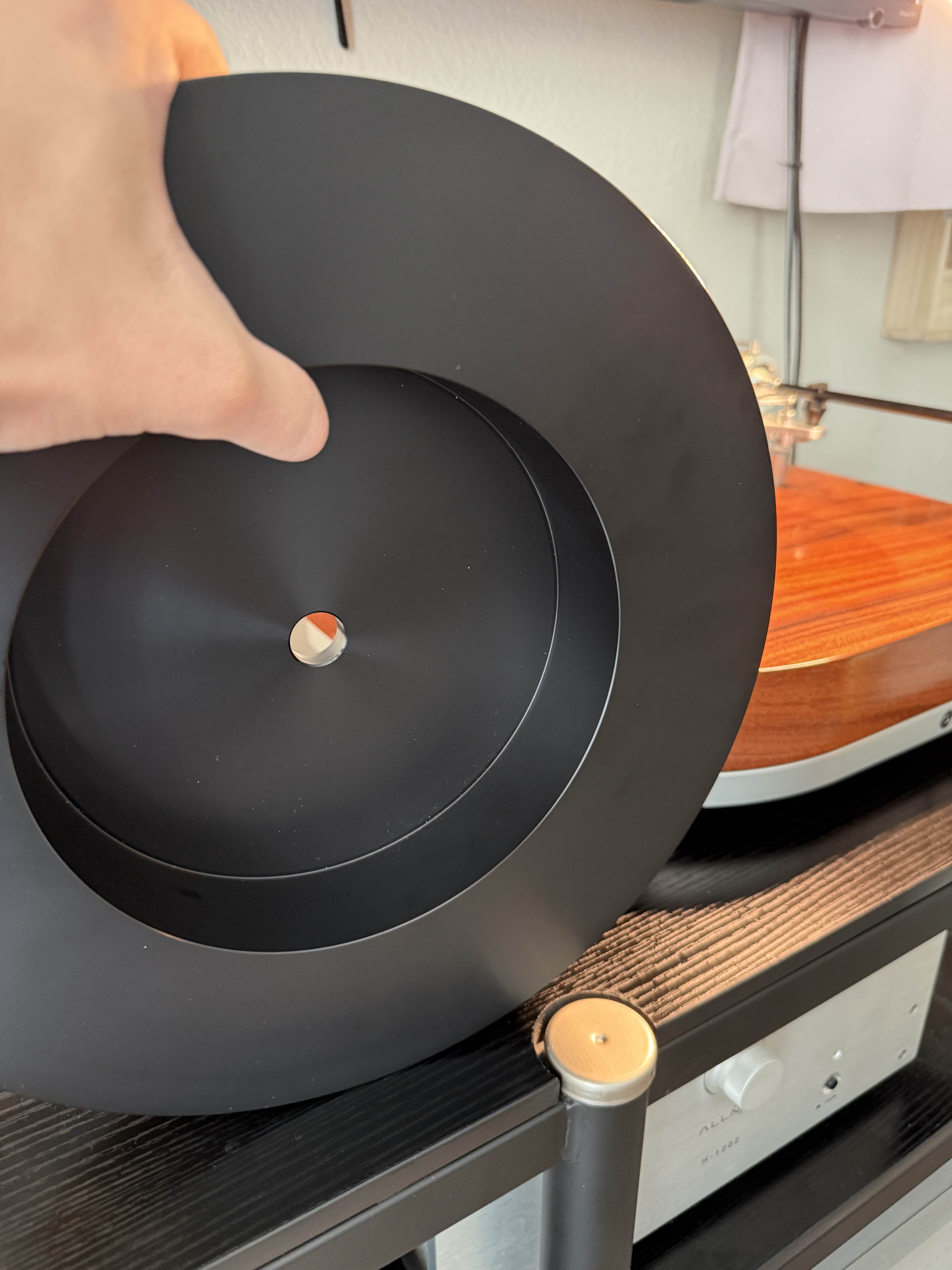 The "flywheel" design of the 48mm Delrin platter
The "flywheel" design of the 48mm Delrin platter
The ¾” machined 6061 aluminum alloy base acts as an integrated isolation platform. It’s actually a rather ingenious design as the wood veneered MDF plinth is contained neatly and securely within, minus the use of any screws or fastenings. Rather, the plinth sits on four isolation feet that fit into pockets machined out of the aluminum base. Stratton has partnered with IsoAcoustics, another Canadian company, that supplies Gaia IV feet in a stable tripod configuration. The newer Harmony and Horizon models use four feet, and though I have not had hands-on time with those models, I generally prefer the stability and ease of tripod configuration leveling. Whether you end up with three feet or four though, the IsoAcoustics feet are easily adjustable, something incredibly important as most equipment racks, including my longstanding, budget-favorite VTI rack, will not be level.
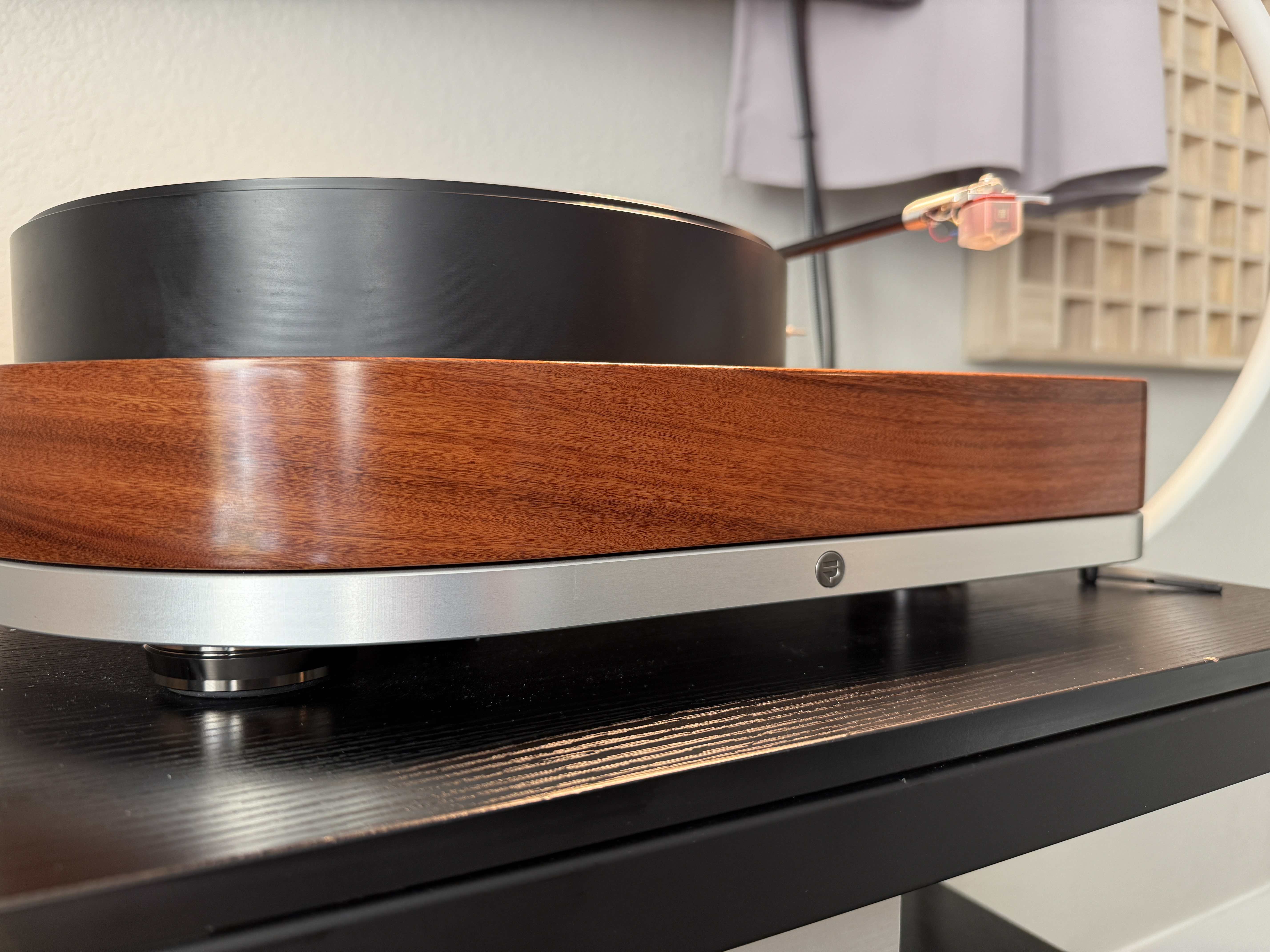 The machined aluminum base with Isoacoustics Gaia feet
The machined aluminum base with Isoacoustics Gaia feet
In addition to the isolation base, all H models come standard with the SS-10 stainless steel isolating record weight. Fitted with a stainless steel ball bearing interface, it's one the most substantially engineered record weights I’ve seen that comes standard with any turntable.
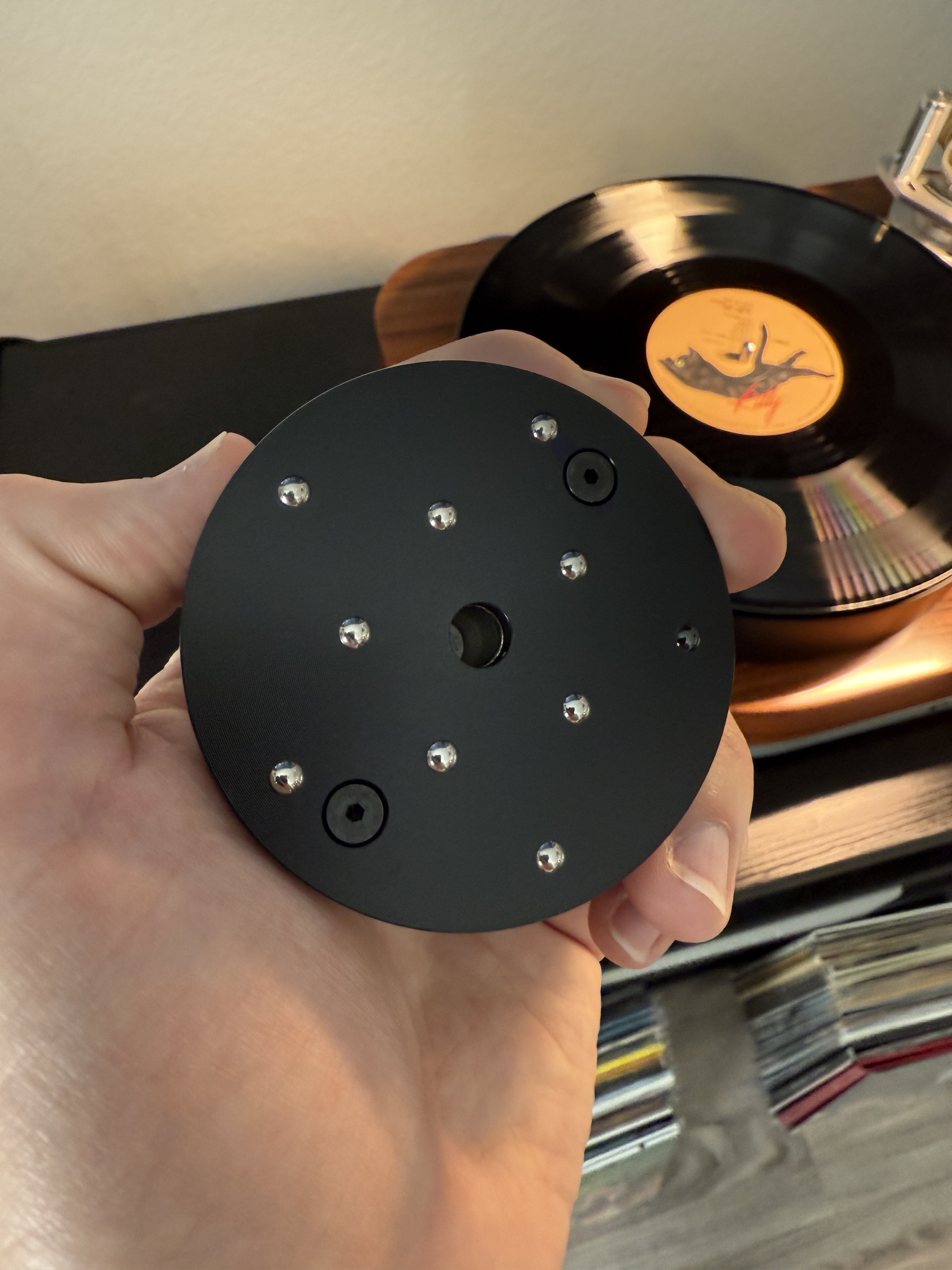 Stabilizing ball bearings on the SS-10 weight
Stabilizing ball bearings on the SS-10 weight
At the time of my purchase, these tables were offered with Acoustic Signature tonearms. I chose for my new Horizon a 9” Acoustic Signature TA-1000 tonearm (currently priced at $2,495). Eventually, the growing demand for both Acoustic Signature arms, and Pure Fidelity tables, led John and his team to seek out other tonearm suppliers, eventually landing on British-made designs from Origin Live. PF also recently released its own tonearm, the Savant ($5,000), which is manufactured by Scotland-based Audio Origami.
All of this is to say that Pure Fidelity tables match well with a wide range of 9” tonearms. While I haven’t yet heard the Savant, I have heard the H series tables fitted with Origin Live arms at a few audio shows and they seemed as well suited to the sonic character of the table, as my Acoustic Signature arm.
The MK1 Horizon variant originally came paired with the “Maestro” speed controller; a small, two switch box that controlled motor power and speed. The "Maestro" connected via a cable to a similarly sized power supply fitted with a standard 15A IEC A.C. jack. Each Maestro was individually factory-calibrated to the 'table with which it was paired, because the speed calibration fine tuning facility was not easily accessed. It's the speed controller shipped with my Horizon that I've been using for the past three years.
During that time Pure Fidelity tables have skyrocketed in popularity due to reviews and customer word of mouth. It turns out people love well-executed simple and elegant belt-drive designs. But also over those three years the company has been slowly tweaking their turntable designs. The tweaks resulted in the recently introduced Mk2 models. The current Harmony and Horizon Mk2 models sell for $8,995 without tonearm.
The MK1 to Mk2 changes upgrade visual aesthetics and sonic performance. My 'table's plinth has a flat top surface. The new models feature a 5mm acrylic-topped cutout that results in the Delrin platter now sitting 3mm lower into the plinth, which removes the visual gap between plinth and platter. Looks sharp, but is purely a visual upgrade.
More important are the sonic upgrades. In addition to the change from three to four isolation feet, the Mk2 models feature a completely new motor controller. Pure Fidelity thinks the change so significant it asked if I wanted to hear how it affects the sound of my 'table. I was intrigued.
The old Maestro controller has been replaced with the “Conductor.” Though these names are essentially synonyms, the new Conductor is a much more substantial electronics unit that promises greater performance than its predecessor (Pure Fidelity clearly missed a great joke by failing to name their new controller the “Music Director Emeritus”).
First, instead of separate controller and power supply boxes, the Conductor combines both into a much larger solid metal chassis with a brushed aluminum face plate. The primary job of this and most similar speed controllers is to send a perfect, non-fluctuating sine wave to the motor—here a 12V one. The AC synchronous motor on the Horizon, like all AC motors, is sensitive to normal and common voltage fluctuations coming out of most North American wall sockets.
Because of this, I long ago discovered that any turntable without a type of separate power supply/speed controller is completely useless for listening to anything that requires rock-steady speed stability. Classical chamber music, particularly solo piano recordings, are the easiest way to easily hear these issues..
 The new Conductor speed controller alongside its predecessor, the Maestro
The new Conductor speed controller alongside its predecessor, the Maestro
The Conductor is one of the most impressively spec’d I’ve ever seen in this department. What’s under the hood? A linear dual rail power supply, a dual H bridge motor drive, a quartz crystal oscillator for the AC sinewave, and “soft start” programming that reduces motor wear by slowly bringing the motor and platter to speed rather than beginning at full power. Outside the unit, on the front face are a trio of push-button LED rings, one for power, and two more for 33 and 45rpm. On the rear is a 15A IEC jack and two fine speed adjustment knobs for 33 1/3 and 45rpm.
 The in-house manufactured Conductor speed controller from Pure Fidelity
The in-house manufactured Conductor speed controller from Pure Fidelity
Switching out my old Maestro for the Conductor was not quite plug n’ play, but it wasn’t terribly difficult. It simply requires unscrewing the acrylic bottom plate of the MDF plinth and swapping out the Molex pin cable with one compatible with the new Conductor. The only tricky thing about this (besides making sure it was facing the correct direction so that the turntable didn’t run backwards) was unscrewing and then re-attaching the brackets that held the wires in place, something simple enough to accomplish with a screwdriver and a little patience depend upon your fine motor skills.
After installation I was tasked with fine-tuning the speed control. When ordering a Mk2 Harmony or Horizon, you’re going to get a Conductor factory calibrated for your turntable's motor. However, since mine was a plug-in upgrade, I had to calibrate the knobs on the rear using a strobe disc, which only took a few minutes. After that it was ‘set it and forget it!’
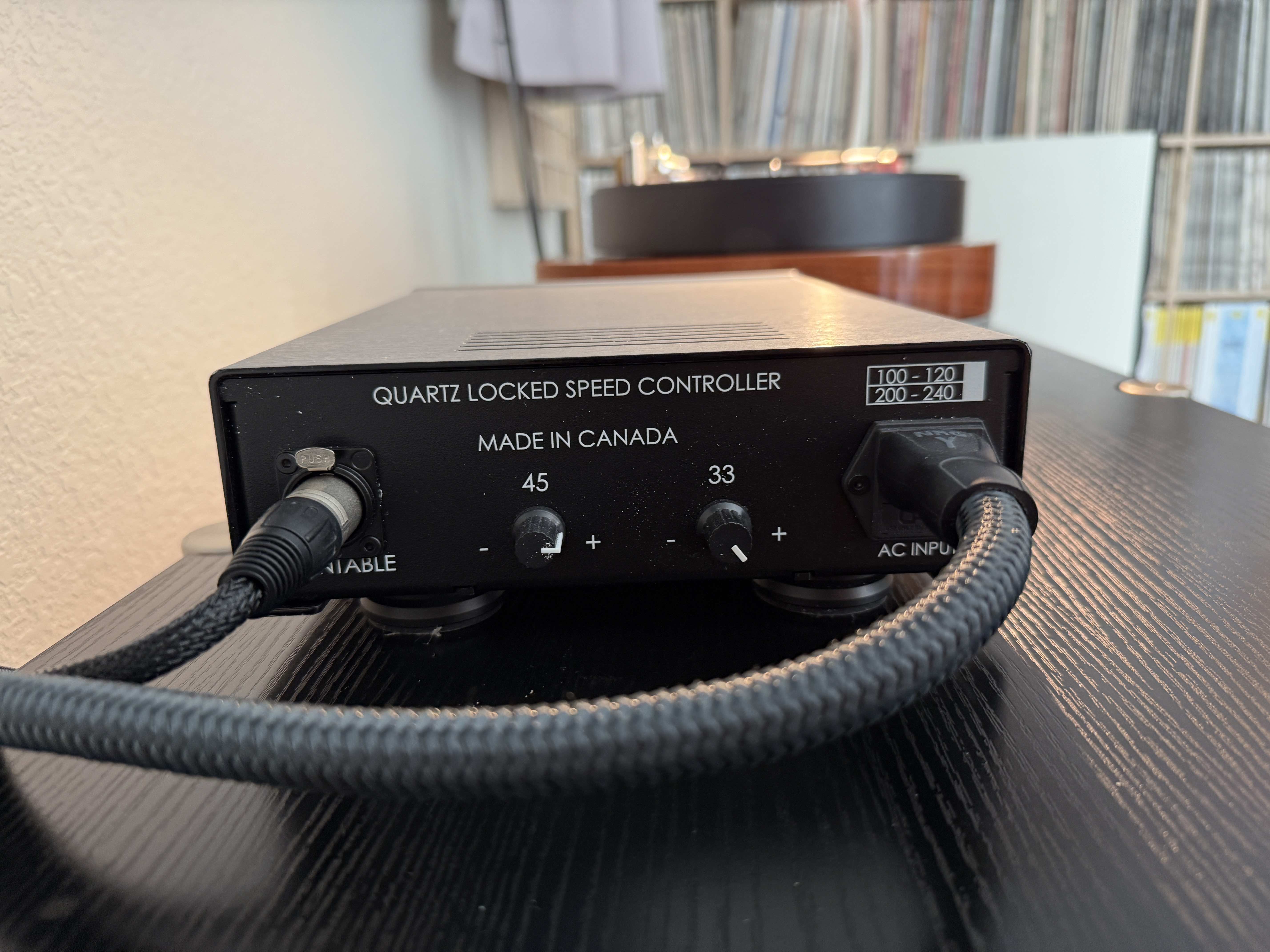 The rear of my Conductor speed controller after strobe-adjusting for both 33 and 45
The rear of my Conductor speed controller after strobe-adjusting for both 33 and 45
The Sound of the Mk2
Over the years, I have become quite accustomed to the sound of my Pure Fidelity Horizon. The hybrid-mass design produces notably clear and neutral sound with excellent instrumental separation and an absolutely crystal-clear vocal presentation (which paired especially well with my Harbeth 30.2 XD loudspeakers that emphasize the same trait). Compared to excellent direct drive 'tables I’ve heard (Specifically the Technics 1210GAE which resides at my family’s house just an hour away) it has always offered a far more liquid and organic presentation that makes things like electric guitars or blown woodwinds more fleshed out and full-bodied. Meanwhile compared to mass-loaded 'tables with heavy aluminum platters, including the VPI Prime 21 which I once had in for review side-by-side with the Horizon, the Horizon is much more agile on its feet, with far better midrange and high register presentations, and bass that while not as big as the Prime, was certainly "faster" and more rhythmically adept.
The Horizon is the 'table that's been with me and in my system across three different moves in three different states in four different listening rooms. I’ve used countless cartridges with it, including the Dynavector 20x2, Hana ML, Audio Technica AT33Mono, and of course my current reference cart, the Hana Umami Red. More notably this has been the turntable that I’ve used as my reference for nearly every Tracking Angle article I’ve ever written. Needless to say, I’ve been pleased. so what exactly could the Conductor speed controller further offer me?
Well, as it turns out, quite a bit.
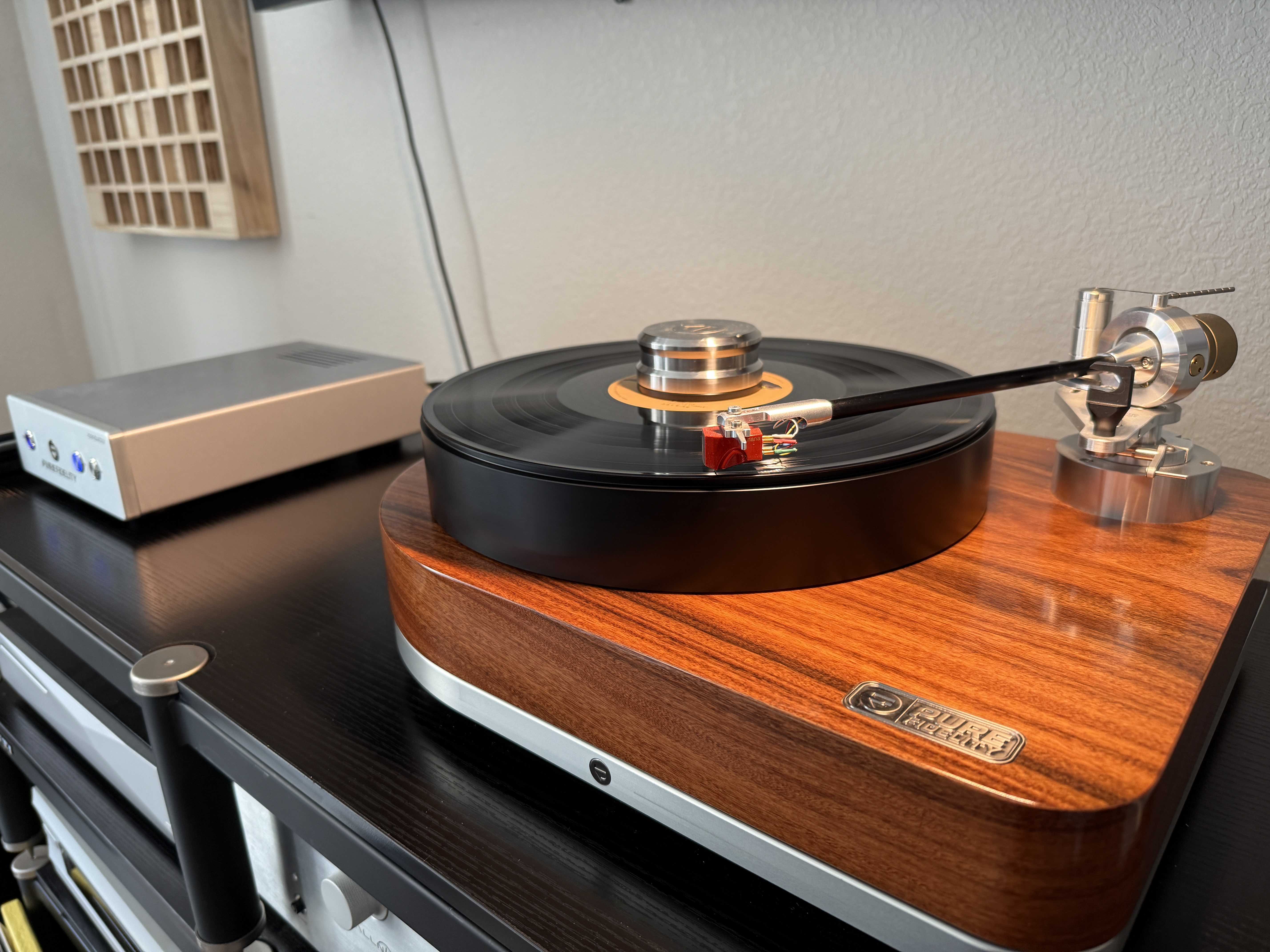 My Pure Fidelity Horizon with the Conductor speed controller, paired with the Acoustic Signature TA-1000 and Hana Umami Red
My Pure Fidelity Horizon with the Conductor speed controller, paired with the Acoustic Signature TA-1000 and Hana Umami Red
The Conductor, which is offered as a $2,000 upgrade to current Pure Fidelity owners, revealed quite a lot from my music: Image, space, and most importantly; dynamics.
What do I mean? Cueing up an orchestral LP, the famous Malcolm Arnold Scottish Dances on Lyrita (SRCS. 109), one immediately can notice an extension of the orchestral stage, while also observing the air around each of the sections of the orchestra. On the second dance, ‘Vivace’, the opening theme featuring clarinets and bassoons sounds bigger, richer, and contains far more phrasing detail than I’ve previously heard. The biggest change however is just how much this work's familiar taut twists and turns surprised me, especially in dynamic passages featuring the very well-recorded bass drum that throughout all four dances displays a thunderous yet rich sound.
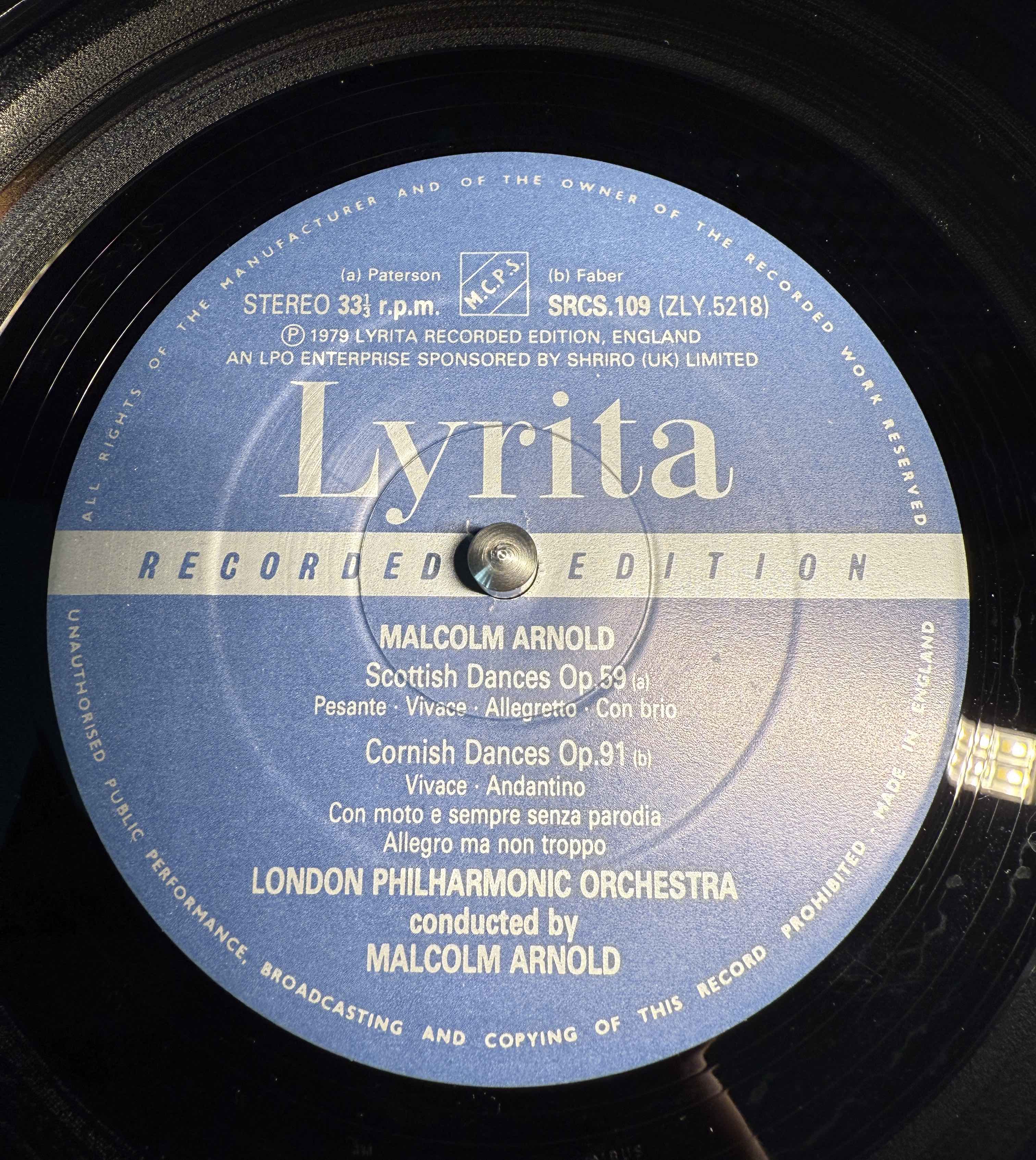 My copy of the Scottish Dances by Malcolm Arnold on Lyrita
My copy of the Scottish Dances by Malcolm Arnold on Lyrita
The blacker backgrounds of a more stable platter rotation lend themselves particularly well to intimate moments such as the harp introduction on the third dance, where I feel as if the instrument is placed more solidly on the soundstage: an exact rather than a general position. This recording is incredibly dynamic, but the Conductor substantially heightens those thrills by allowing intimate and delicate moments to sound more clear and more enticing. Large moments on the other hand, have a more rock-solid definition with which to pummel the listener, such as in the opening brass fanfare of the first of the Scottish Dances.
As I previously noted, solo piano recordings are a true test of any turntable's speed accuracy, but especially belt drives. Well, if you’re looking for an LP to test this in your system, I can highly recommend the recent DG Original Source reissue of Maurizio Pollini performing Chopin’s 24 preludes. It contains one of the best piano sounds on the label and one of the most balanced tonal presentations even if it lacks a bit of warmth. But what this recording demonstrates with the Horizon and its accompanying Conductor, is that the sustain and decay of the hammer-struck strings is unwavering in solidity and consistency. Further, the stability of the platter under these conditions completely casts away any hint of pitch inconsistency, something I have become very sensitive to over years of classical listening.
With more studio-dubbed affairs such as the pop opus that is Pet Sounds in glorious 45rpm stereo from Analogue Productions, I likewise noticed a vast improvement in impact and clarity. The cavernous percussion on ‘Wouldn’t It Be Nice’ has never sounded so unveiled and solid. I was certainly used to the deep bass this AP pressing offered, but with the addition of the Conductor those instruments like bass drum and timpani in the massive Phil Spector-like wall of sound actually had their own shape and timbre, rather than just sounding like a murky blob. The definition is not just found in the bass regions though, as the accompanying harmonized vocals on You Still Believe in Me are more fleshed out, with greater room filling clarity and texture.
The lush instrumental arrangements on ‘God Only Knows’ will sound gorgeous on pretty much any system, but this combo of speed, and therefore image stability provided by the Horizon let’s you listen in to all the inner details of the track, not just the surface level melodies. The insane details present, particularly in the various auxiliary percussion like wood block or tambourine are very easy to get lost in. The Conductor turns what is already a balanced turntable into one that keeps that excellent character while dredging up from my records every last musical nuance that previously didn't fully present themselves.
This level of detail is up there with some of the super tables I’ve heard in the past such as the aforementioned Reed Muse or the VPI Avenger Direct. But what I love most about the Horizon, particularly with the Conductor upgrade, is how this table presents the natural sonic character of the recordings in my collection. From the most polished, squeaky-clean studio productions of the 1980s, to the warm and natural 3-mic recordings of the classical and jazz golden age, their uniqueness passes through the Pure Fidelity like a breeze through an open window and directly connects this listener to the performers without any apparent coloration or veiling.
Conclusion
Look, $11,000 for a 'table and arm combination is not cheap, nor is it in everyone’s wheelhouse to afford such a turntable. When I wrote about the original Horizon two years ago, I remarked that this 'table represented a solid step into the high end from a good number of the popular mass-marked options many of us have cycled through. Well, in its Mk2 iteration, the Harmony and Horizon are not just a step, but rather a full experience of what high end analog playback has to offer. This is a turntable worthy of the most intricate moving coil cartridges and would find itself at home in some very engaging systems. As I write this I am listening to the Horizon through a pair of recently reviewed Raidho X2T loudspeakers ($19,000 in gloss white) and am amazed at the beauty this simple machine conveys through both its looks and more importantly its sound.
Lots of equipment passes in and out of my listening room, but the Pure Fidelity Horizon is a permanent fixture, it’s a part of me, and represents something important in my journey through sound. Pure Fidelity certainly doesn't need my help making this case, as it seems to be having no issues placing its tables in loving listening rooms, but my advice is to go hear one and experience what it can do to present your music in such a raw, undiluted and organic manner. If you’re like me and already own a Mk1 variant, I’d say the $2,000 jump to the MK2 with the Conductor is an easy and immediately rewarded decision.
Specifications
Dimensions and weight: 17” wide x 14” deep x 7.5” average height (430 x 355 x 190 mm) and weighs 43 lbs. (19.5 kg).
Pricing: $8995 without tonearm. $11,295 with Origin Live Illustrious Se tonearm. $13,995 with Pure Fidelity Savant tonearm.


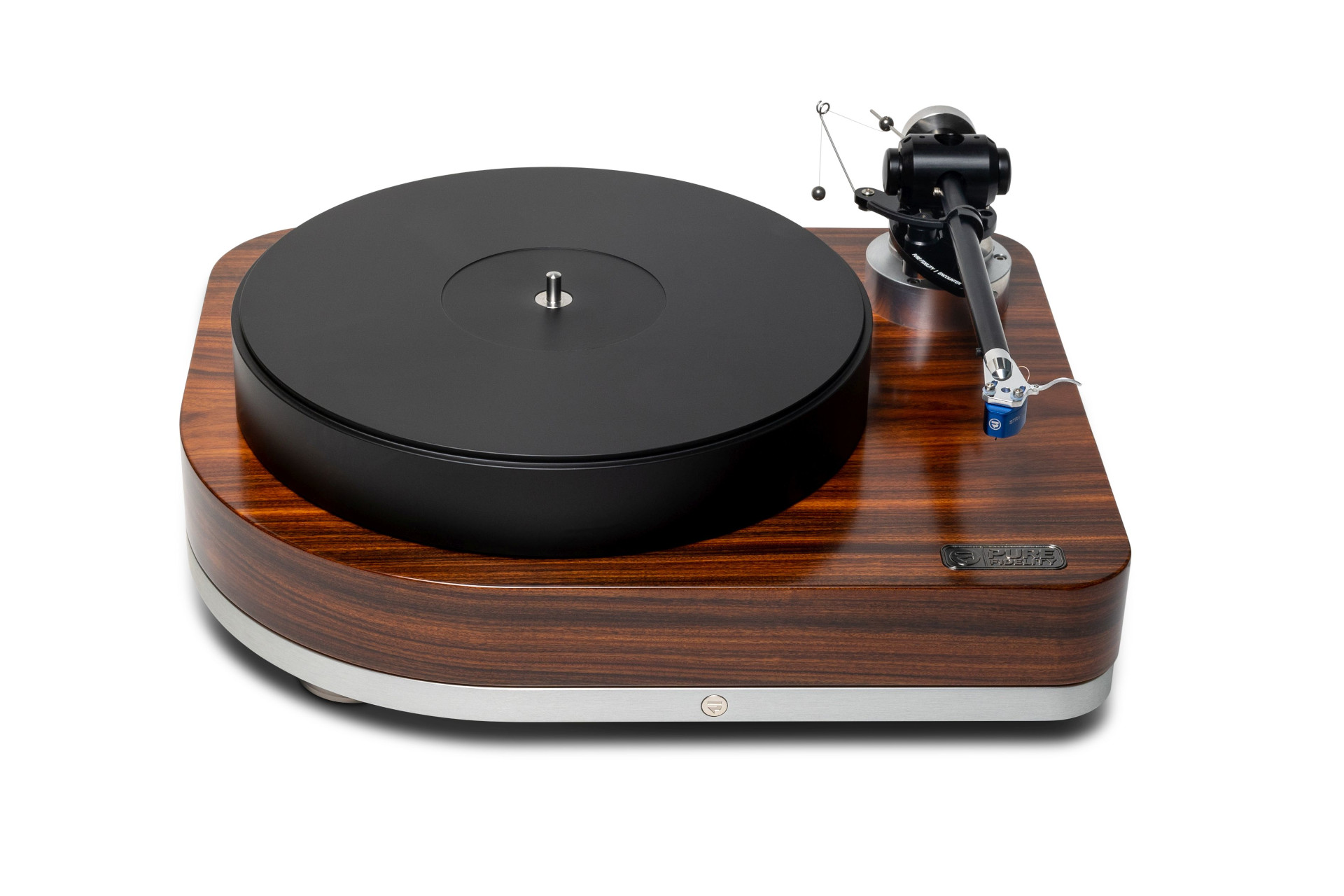






































.png)








